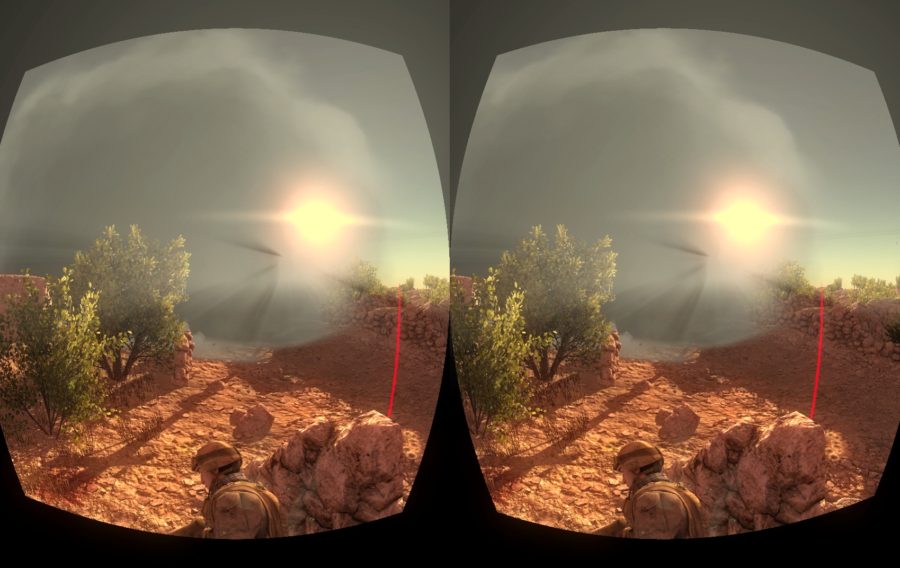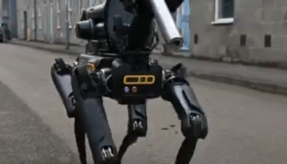
With budget being reduced between 2015 and 2017, the MOD is moving away from bespoke solutions and towards a model in which requirements are fulfilled in part by Commercial Off The Shelf technology.
Here Peter Doig, Plextek Business Manager for Defence, and Dr Aled Catherall, Plextek Technology Lead for Defence, talk about the use of COTS in Land materiel.
Commercial Off The Shelf (COTS) technology, originally funded by non-defence markets such as consumer and automotive, is becoming the ‘go-to’ solution for many design programmes due to the significant cost-savings it offers within development and procurement.
Solutions comprised of COTS technology present a number of advantages in comparison to fully bespoke defence solutions. Firstly, the Ministry of Defence does not have to foot the research and development bill to develop the technology. Secondly, markets such as consumer and automotive are high-volume, with large economies of scale which mean highly capable and complex electronic devices are low in cost. Take, for example, the modern smartphone with its myriad sensors and functions which can be bought for as little as £100. A bespoke military smartphone developed from scratch, on the other hand, would cost many millions to bring into service.
Many technologies which were once pioneered by the defence sector, such as LCDs and computer processors. are now being driven by the consumer market. As a consequence, the defence sector must use consumer COTS technology in many instances in order to be at the forefront of the latest technology and to provide the game-changing capabilities our soldiers require.
The potential for suppliers to leverage from COTS technology in defence products is vast, ranging from clothing and tools to high-tech systems. Solutions can range in complexity from standard-issue footwear requiring a few basic tests before roll-out, all the way through to armoured vehicle sub-systems combining standard vehicle architecture with secure communications systems, electronic countermeasures and situational awareness sensors.
A cross-industry innovation approach based on COTS technology from non-defence markets encourages other companies in the supply chain to adapt and further innovate their products to achieve a cost-down, interoperable solution that is effective within the tough defence landscape.
Capability enhancing technology
Although the primary objective for using COTS technology in the defence market is to cut development costs, it can play a hugely valuable role in increasing military capability.
For example, Plextek’s work with the Centre for Defence Enterprise (CDE) to create a compact, wearable radio designed to transmit and receive covert signals in extremely difficult propagation conditions is an example of the huge potential COTS developments can have on the UK Armed Forces.
As with so many military technologies, ‘SWaP’ (size, weight and power) was a crucial consideration to ensure the technology could last on battery power for the duration of a mission while not presenting any significant weight or size burden to the soldier. These objectives were achieved using existing COTS technologies including a Raspberry Pi single board computer and a miniature digital television receiver.
The COTS parts involved in this project cost less than £50. With around 90,000 soldiers in the UK military requiring this capability, such a development would not have been a viable option if COTS technology had not been used.
Better equipping soldiers
The use of virtual reality headsets, such as the Oculus Rift, is a good example of how military technology can adapt solutions that are typically used in consumer gaming to provide a beneficial training tool for the UK Armed Forces.
As part of CDE’s ‘Medic of the Future’ competition, Plextek created an immersive simulation training system for the military using the Oculus Rift. The low-cost system can accurately replicate pre-hospital care on the battlefield and allows trainees to negotiate and prioritise clinical needs, in order to teach teamwork and decision-making skills within high-stress ‘under-fire’ scenarios. Using the Oculus Rift, soldiers can look around their surrounding environments, navigating through the virtual battleground to attend to an injured soldier. While this is occurring, stress factors such as decreasing consciousness level of the injured solider, worsening respiratory distress, gunfire, enemy sniper attack or bomb attacks are added to the simulation.
Due to its affordable price-point, it has the potential to be widely deployed in order to augment and improve existing training techniques.
The challenges with COTS technology
Despite the advantages COTS technology provides, incorporating components originally designed for different operating environments can be a challenge. Automotive components are typically designed to withstand robust scenarios, ideal for both defence land vehicles and body-worn solutions, whereas smartphone systems are typically much less tolerant to vibration, shocks and extremes of temperature. Difficulties can arise when these technologies are integrated within an alternative product and placed within operating environments they cannot handle.
COTS technology also presents a number of other problems for the MOD. The MOD is often a relatively small and insignificant customer when it comes to COTS technology from high-volume industries which typically sell units in the millions. Consequently, the MOD has little influence with the manufacturer of the technology on its design and specification (eg the format of data from a sensor or its SWaP) and must buy the item off the shelf as is.
Often COTS technology will provide 90% of the required performance, and the challenge for defence suppliers is how to augment the performance and find that extra 10%, which can often be an extremely challenging and costly process. Nevertheless, a viable solution using augmented COTS technology can often be found at a fraction of the price of its bespoke equivalent through expert engineering design and innovative thinking.
The future is COTS
With the right focus on innovation and the cross-pollination of ideas it is easily possible to add value in any of the current problem areas being faced by the MOD and the wider defence industry. COTS technology not only allows for a wider variety of technologies to be used within the military market, but these solutions are also cheaper and can be rolled out on a larger scale to a higher number of troops.
Through the implementation of COTS, low-cost, feature-rich consumer devices such as Android smartphones and open commercial technology can be re-tasked into defence applications with the potential to provide capability at a very attractive price-point for the MOD.
What’s more, it is possible to create even better solutions, as seen by Plextek’s work with CDE. The decision left for the MOD is balancing when to make premium investments in purpose-built bespoke solutions optimised for defence, versus the COTS route which may not be as optimal but is significantly lower in cost while providing the MOD with improved and unique capabilities.
If you would like to join our community and read more articles like this then please click here
CDE Centre for Defence Enterprise Commercial Off The Shelf technology COTS Dr Alex Catherall Dstl Land technology MOD MOD DCB Magazine Peter Doig Plextek Plextek Technology Lead for Defence R&D








